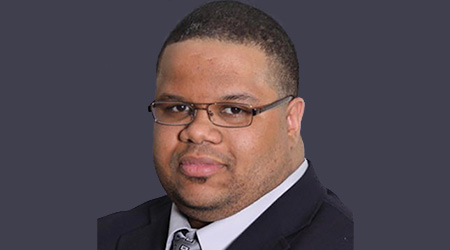How to Create a Robust Facility Health and Safety Program
A comprehensive, robust health and safety program can help managers protect facility employees, occupants and visitors.
Maintenance and engineering management consists of many moving parts. To be successful in this profession, managers must balance three major components – safety, cost, and quality – to provide the highest quality service at the lowest possible cost in the safest manner possible.
Safety, or the lack of it, can be a very expensive proposition if not addressed and accounted for properly. Managers must have procedures in place to protect employees, visitors, and members of the public from hazards and harm. These procedures are the basis of a robust health and safety policy and program that enables managers to provide top quality, efficient services, and keep employees, tenants and other stakeholders safe.
People are the most important aspect of any enterprise. If you take care of your people, you will take care of your business. This adage is paramount, especially as it pertains to providing a safe space for employees to work and for stakeholders to navigate.
Solid foundation
Any successful facilities organization must have a culture that fosters continuous improvement as it pertains to health and safety. It must be embedded in the DNA of the organization and be an integral part of its purpose and values. Every member of the organization needs to be engaged in the process, and every employee needs to strive to identify risks that could lead to injuries and occupational illnesses and try to eliminate or manage those risks.
The goal is to minimize risks to department employees, occupants and visitors. Contractors who work with the organization must share the same commitment to health and safety as the organization.
All department personnel must understand their roles and responsibilities related to health and safety under the policy and contribute to continuous improvement in this area. To ensure success, several foundational elements must be in place:
- Clear purpose and values around health and safety and a commitment to live out those values every day
- A culture of accountability where the commitment to health and safety is rewarded and unsafe acts and behavior are addressed accordingly
- A culture without fear of retaliation or retribution if one speaks up for safety. Employees who see a safety concern should feel empowered to speak up immediately. They should feel empowered to report them, and they should feel confident that the concern will be addressed in a timely manner.
- A culture where employees have the right to stop their work or an activity if risks haven’t been mitigated or if employees feel they are being put in harm’s way.
- A culture where resources and budget are allocated properly to enable a robust health and safety system.
- A culture where health and safety data drives decision making.
- A culture where health and safety efforts are supported beyond the workplace, even in employees’ homes and communities.
PDCA: A closer look
Before delving into the details of establishing a robust health and safety program for a facilities organization, it’s important to understand that the program should experience continuous improvement and change. A good model to use when establishing a program with these attributes is the plan-do-check-act or PDCA cycle.
What does PDCA mean?
Plan means to establish objectives and processes required to deliver the desired results.
Do means to carry out the objectives developed in the Plan phase.
Check means to evaluate the data and results gathered from the do phase. This phase is very important because this is where effectiveness of our objectives and processes is measured.
In the Check phase, data is compared to the expected outcomes to see any similarities and differences. These similarities and differences identify problems, non-conformities, continuous improvement opportunities, inefficiencies, and other issues. In this phase, managers can improve the process by acting to investigate the root cause of these issues. Once the root causes are discovered, they are eliminated by modifying the process.
At the end of the Act phase, the process should have better instructions, and objectives should be clearer and more effective. After modifying the process and objectives, managers start the cycle over with a revised plan and an improved baseline, enabling a circular generator of continuous improvement.
Putting PDCA to work
How does the PDCA cycle pertain to establishing a health and safety program for a facilities organization? Establishing a robust health and safety system requires a good plan. The elements of such a plan include: identifying requirements or standards to adhere to; establishing a mechanism to identify, assess, and control hazards and risk; and establishing a process to manage change.
The safety policy is the course of action the facilities organization uses to project the safety, health and wellbeing of employees, tenants, and stakeholders. With respect to requirements and standards, the organization must have a process in place to ensure the health and safety system includes the applicable requirements for the locale in which they do business and any corporate standards that might apply to their location.
As a part of the plan, maintaining an up-to-date record of applicable regulatory and corporate requirements ensures that the facilities organization is meeting its obligation for health and safety from regulatory and corporate perspectives.
The cornerstone of a strong health and safety system includes hazard and risk identification, assessment, and control. It empowers the organization to reduce workplace injuries and eliminate fatalities. The hazard and risk process is systematic, based on tools to identify safety and industrial hygiene hazards and to evaluate the criticality of the risks.
Managing change is a standard and consistent method used for administering changes, whether temporary or permanent, to people, processes and property. It’s a systematic approach aimed at ensuring the continued safety of the workforce throughout the process.
If any aspect of the Plan phase of PDCA should be highlighted, it is management of change. Accident reports show that hasty decisions made under pressure without a balanced evaluation have been at the root of many serious problems.
Time to think in a disciplined manner is not time wasted. And if your management of change process is efficient, it will not unduly impede progress on the rare occasion when it is a true emergency.
Darrell X. Rounds leads electrical and mechanical engineering for General Motors’ facilities organization, Sustainable Workplaces. Rounds has more than 21 years of facilities management and engineering experience, and he has led operations and maintenance activities for facilities with more than 53 million square feet and $7.2 billion in asset replacement costs.
Related Topics:













